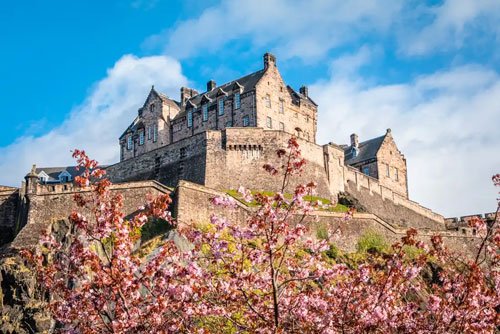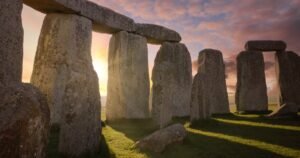History of Edinburgh Castle
History of Edinburgh Castle
Perched atop a volcanic crag, Edinburgh Castle stands as an iconic symbol of Scotland’s rich history and enduring spirit. Its commanding presence has witnessed the ebb and flow of empires, the rise and fall of monarchs, and the enduring resilience of the Scottish people.
Delve into the captivating chronicles of Edinburgh Castle with our timeline and comprehensive overview, unraveling its construction, purpose, and evolution throughout the centuries. Discover the captivating events that unfolded within its walls, and its architecture.
Historical Timeline of Edinburgh Castle
9th century B.C.
Castle Rock, the site of Edinburgh Castle, is artificially flattened.
600 A.D.
The first fortifications are built on Castle Rock.
1093
King Malcolm III of Scotland begins the construction of a royal castle on Castle Rock.
1174
King William the Lion of Scotland begins a major expansion of the castle.
1296
King Edward I of England captures Edinburgh Castle and removes the Stone of Scone, the coronation stone of Scottish kings, to Westminster Abbey in London.
1314
Robert the Bruce, King of Scotland, recaptures Edinburgh Castle from the English.
1440
The Black Dinner takes place in Edinburgh Castle, during which the Earl of Douglas and his brother are murdered by King James II.
1514
King James IV of Scotland builds the Great Hall, one of the largest medieval halls in Scotland.
1567
Mary, Queen of Scots, gives birth to her son James VI of Scotland in Edinburgh Castle.
1603
James VI of Scotland becomes King of England and Ireland, uniting the two crowns.
1707
The Acts of Union are passed, uniting England and Scotland into the Kingdom of Great Britain.
1812
Edinburgh Castle becomes a military prison.
1910
Edinburgh Castle becomes a museum.
1996
The Stone of Scone is returned to Edinburgh Castle and the stronghold is designated a UNESCO World Heritage Site.
History of Edinburgh Castle
Delve into the storied history of Edinburgh Castle with our meticulously crafted overview. Immerse yourself in each intricately presented segment, journeying through time to unveil the origins, transformations, and profound cultural significance of this iconic masterpiece.
Architecture of Edinburgh Castle




The construction of Edinburgh Castle, spanningfrom the 12th to the 16th centuries, stands as a testament to centuries of architectural ingenuity and artistic expression and reflects a blend of architectural styles, including Romanesque, Gothic, and Renaissance, seamlessly interwoven into the castle’s imposing structure.
The castle’s architectural highlights include the formidable ramparts, the imposing Half Moon Battery, and the elegant Great Hall, designed by John Stewart of Baldynneis. Within its walls, visitors can admire a rich tapestry of artistic elements, including the Crown Jewels of Scotland, a collection of exquisite royal regalia, and the National War Museum, showcasing Scotland’s military heritage. The castle’s interior also features the Mons Meg, a colossal medieval cannon, and the One o’Clock Gun, a daily tradition that signals the arrival of noon.



















